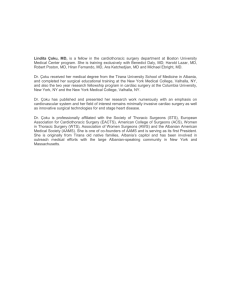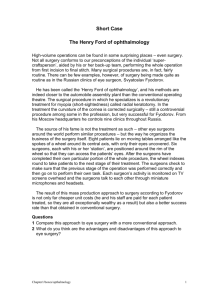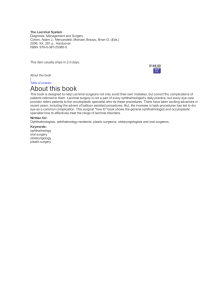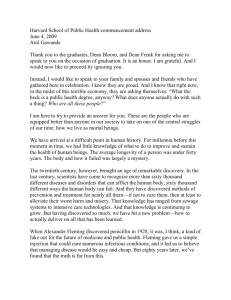Sample Slides - History Interactive
advertisement
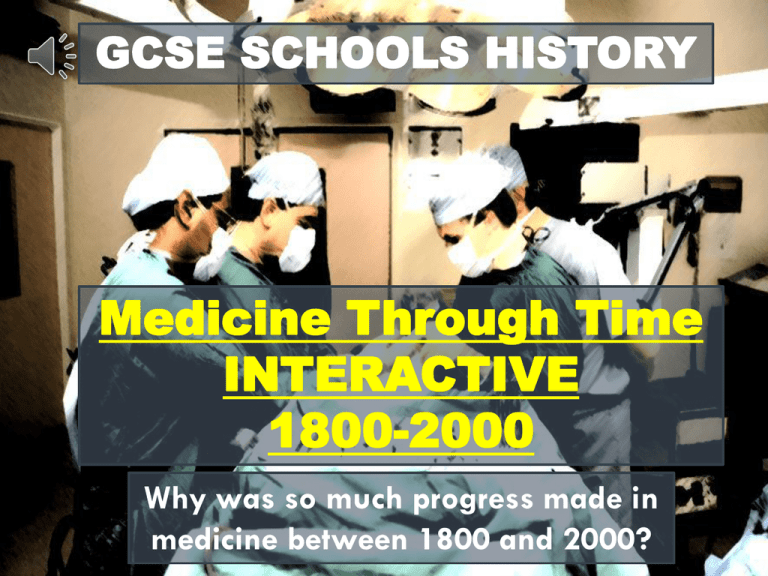
GCSE SCHOOLS HISTORY Medicine Through Time INTERACTIVE 1800-2000 Why was so much progress made in medicine between 1800 and 2000? Spontaneous Generation Versus The Germ Theory Before Pasteur, the most accepted theory of the cause of disease was ‘spontaneous generation’. This was the idea that germs (microbes) were Scientists and doctors made by disease. made discoveries regarding the cause of illness, they discovered ways to killer Another theory prevent was that disease wasdiseases and made some caused by poisonous gases called We now know that microbes improvement in public health. By 1800, people miasmas given off from rotting are already present in the air, rubbish, sewage. knewfood oforthe existence of germs, but they and it isthought the germs which cause rottingway and decay and the that disease caused germs, not the the other bad smells, not the other way Therefore, preventing the bad smells round. This idea was called the Theory of had believed. round as people would prevent the generation of This was apoint real breakthrough Spontaneous Generation. The real turning microbes and therefore, prevent in understanding the cause of was disease. Pasteur who discovered the Germdisease. Theory of doctor, A German Robert Koch took Pasteur’s disease. work further. GCSE Schools History Medicine 1800-2000 13 17 Learning Outcomes Bywas the end of this section you will1800? learn What the state of surgery before about1800, someanatomical of the major problems doctorsenormously. William Harvey demonstrated Before knowledge increased and patients had and when the function of the heart theundertaking circulation of the blood. However, surgery remained an thewas learning extremely and risky business 1800. The hygiene very poor. Surgeons surgery painful and the changes which inhelped to level ofRead outcomes first. operated in dirty theatres andunderstand used instruments washed between overcome them. You will the that were rarely operations. They wash hands before importance ofdid thenot work oftheir individuals such or between operations, or wear clean clothes. There were no Lister. anaesthetics operations were done. Surgery was usually as Simpson and Why so didfew some limited to amputating limbs or removing large tumours. No internal surgery was possible. doctors oppose the introduction of Patients, who survived the shock and pain of the operation, often died of infection. If a anaesthetics andthere antiseptics? patient lost a lot of blood was no way of replacing it, as blood transfusions were not perfected until the early 20th century. Two important surgeons of the 18th century were William Cheselden and John Hunter but the best surgeons were judged by their speed. In the late 1700s, a record was set for removing a leg in 35 seconds, although the surgeon managed to cut off the patients left testicle and two of his assistant’s fingers too! In 1800, the Royal College of Surgeons was founded and the poor reputations of surgeons improved. In large hospitals the teaching of anatomy was increasing. GCSE Schools History Medicine 1800-2000 24 Problem: Paré's ligatures often introduced infection into a wound. Solution: Lister introduced sterilized catgut to tie off blood vessels. Problem: A blood donor had to be present as blood clotting still caused storage problems. Solution: In 1915 Lewisohn found that sodium citrate stopped blood clotting in a syringe. Blood cells were separated from the liquid part and were in bottles. major problem stored in surgery. What solutions were developed to deal with blood loss? Blood loss was still a Bleeding Solving makes itthe difficult for the surgeon to see problem of what heblood is doing, if the patient lost too muchLoss of blood Problem: lossand during surgery. pressure blood, they often died. Wounds or amputations Solution: Dr Harvey Cushing, were sealed by placing a hot iron on the wound or Problem: Blood transfusions human to an American neurosurgeon, pouring oil over it to seal the blood vessels. human hadhot failed. monitoredPare blood pressure Solution: [1536] In 1901 Karl and developed hadLandsteiner used ligatures to tie the blood vessels. a technique discovered blood sealnot blood vessels with This groups. was aSuccessful far less painful method buttodid transfusions were now possible. electric currents. always stop the bleeding if they were not tied Problem: Large amounts of blood properly. Important developments to solve the needed during war. problem ofSolution: blood did not come after 1900. The National Blooduntil Transfusion Service was set up during the First World War so people could donate blood. GCSE Schools History Medicine 1800-2000 30

